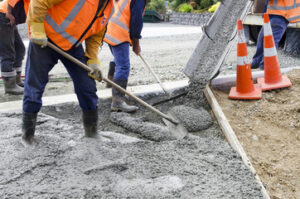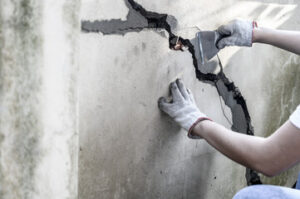Concrete Contractor Columbus is an essential team member for a home construction project. Their skills and experience ensure that the quality of the concrete work is top notch.

When meeting with contractors for estimates, look for those who offer free, transparent quotes with detailed line item breakdowns. This is an excellent indicator of a contractor’s transparency and professionalism.
When choosing a concrete contractor, experience is an important factor to consider. An experienced contractor will be able to manage the project more efficiently, communicate clearly with clients, and produce high-quality results. During the vetting process, ask potential contractors to provide details about their previous projects. Review their portfolio, paying particular attention to the quality of workmanship, aesthetics, and long-term durability.
An experienced concrete contractor will also be familiar with the latest industry standards and best practices. Look for certifications from industry organizations. This indicates that the concrete contractor is up-to-date on the latest advancements in the industry and that they are committed to excellence.
In addition to asking about a concrete contractor’s experience, ask for references from past clients and inquire about the quality of their work. Lastly, ask a potential concrete contractor about their insurance policies. It is important to ensure that the contractor carries liability and workers’ compensation insurance coverage in case of any accidents during the construction process.
It is also essential to find out whether the contractor has a license to operate in your area. If not, it is best to move on to another candidate. In addition, be sure to get thorough quotes that include detailed line item breakdowns of each cost.
Finally, it is important to choose a concrete contractor that understands your vision for the project. For example, if you are building a steel-framed structure, an experienced concrete contractor will be able to coordinate with the team that will erect the structure and avoid any issues that could delay the construction schedule. They will also be able to advise you on the best concrete mix for your specific needs.
License
To become licensed as a concrete contractor, an individual must meet certain requirements. These include work experience, an exam score, and submission of paperwork to the relevant licensing board. Additionally, he or she must obtain insurance and bonding. While pursuing a career as a concrete contractor is challenging, it offers great rewards for those with the right qualifications and passion.
Unlike other construction materials, working with concrete requires attention to detail. The way concrete is poured, smoothed, and finished makes all the difference in the final results. Additionally, contractors must factor in soil conditions and load requirements when installing concrete structures. For example, commercial buildings require robust foundations to withstand heavy loads while parking lots need a smooth finish to accommodate traffic.
As a licensed concrete contractor, an individual must also be knowledgeable about laws and codes. He or she must be able to understand and follow local, state, and federal regulations when installing concrete structures. Additionally, he or she must be able to manage projects on time and budget. To do so, the contractor must be able to negotiate prices with suppliers and monitor financial trends.
Those interested in becoming licensed as a concrete contractor can find many resources online to prepare for the C8 licensure exam. These resources include study guides, preparation materials, and practice tests. By following these guidelines, a person can be more confident when taking the exam and increase his or her chances of passing.
Insurance
As a concrete contractor, you face unique risks that require specialized insurance solutions. Investing in tailored insurance policies protects your business from unexpected challenges, ensuring that you remain confidently focused on delivering quality work and building trust with clients.
When choosing a concrete contractor, evaluate their insurance coverage and ask to see proof of insurance. A reliable and trustworthy contractor will happily provide this information. Evaluate the contractor’s general liability policy, workers’ compensation insurance, and commercial auto insurance. In addition, you should also inquire about the length and terms of their workmanship warranty and after-sales support.
A reputable concrete contractor will be transparent about their quality assurance procedures and offer comprehensive warranties to their customers. You can also inquire about their commitment to safety and compliance with local regulations. For example, if you are hiring a concrete contractor to pour a new slab for your foundation, ask about their safety measures and whether they have adequate work permits.
Commercial property insurance offers vital protection for the machinery, materials, and vehicles that power your concrete construction operations. It covers damages and losses that might occur in your storage yards, mixing facilities, or offices. If you rely on vehicles to transport equipment or deliver concrete materials, you should consider purchasing commercial auto insurance as well. The type of vehicle used, driving records, and other risk factors will determine your business’s specific needs and insurance coverage requirements. Talk to a licensed insurance agent who can help you assess your needs and find the best possible solution for your concrete construction business.
Warranties
Concrete is a very durable material, but it can crack over time. It’s important for contractors to understand how to repair these cracks and prevent new ones from forming. A good contractor will offer a warranty on their work that covers damage for a certain period of time. This ensures that if something goes wrong with the concrete, the contractor will repair it.
While warranties may vary depending on location, there are some basic standards that every contractor should adhere to. Ideally, look for a warranty that lasts at least one year. Additionally, if possible, find out what is covered by the warranty. For example, some contractors will exclude damage caused by weathering or deicers from their warranty.
Another factor to consider when choosing a concrete contractor is their reputation. A reputable contractor should be able to provide you with references from past clients. Contact these references and ask about their experience working with the contractor. Ask about the contractor’s work ethic, timeliness, and overall quality of workmanship.
When it comes to residential and commercial construction, a skilled concrete contractor is an invaluable resource. They use their expertise to create sturdy foundations, paved roads, and retaining walls. These structures are essential to the longevity and safety of buildings, roads, and other projects. With their help, these projects can be completed on schedule and within budget. Additionally, concrete contractors can help to add aesthetic appeal to residential and commercial properties. For example, a concrete contractor can install decorative stamped overlays to driveways, sidewalks, and patios. These overlays can add a pop of color to an otherwise bland surface and enhance the visual appeal of any property.
Communication
Clearly articulate your project’s requirements and preferences to ensure your concrete contractor understands what you want. Ask for references and contact information from past clients. Their feedback can offer valuable insights into the contractor’s professionalism and quality of work.
Assess the concrete contractor’s expertise by evaluating their portfolio of completed projects. Look for photos of decks, patios, walkways, driveway paving, foundations, and other commercial and residential concrete work. Ensure that the photos are not stock images or photographs from other websites or social media. A reputable concrete contractor will take pride in their work and be able to provide you with real-life examples of their craftsmanship.
A reputable concrete contractor will also be knowledgeable of the various types and applications of concrete. They will be able to recommend the best materials for your unique project. In addition, they will have a strong understanding of local building codes and regulations. Lastly, they will be able to navigate the permit process efficiently and accurately.
Check the contractor’s license and insurance to confirm they are reputable. Make sure they have a valid license in your area and that they are insured to protect you in case of any accidents or damages during the construction process.
A reputable concrete contractor will pay close attention to detail and ensure that all work is performed according to industry standards. They will also be able to identify potential issues and quickly resolve them to ensure the project is completed on time and within budget. Having a dedicated point of contact throughout the construction process is essential for ensuring clarity and effective communication between all parties. Ask the contractor about their preferred method of communication and whether they can accommodate your preferred schedule.
